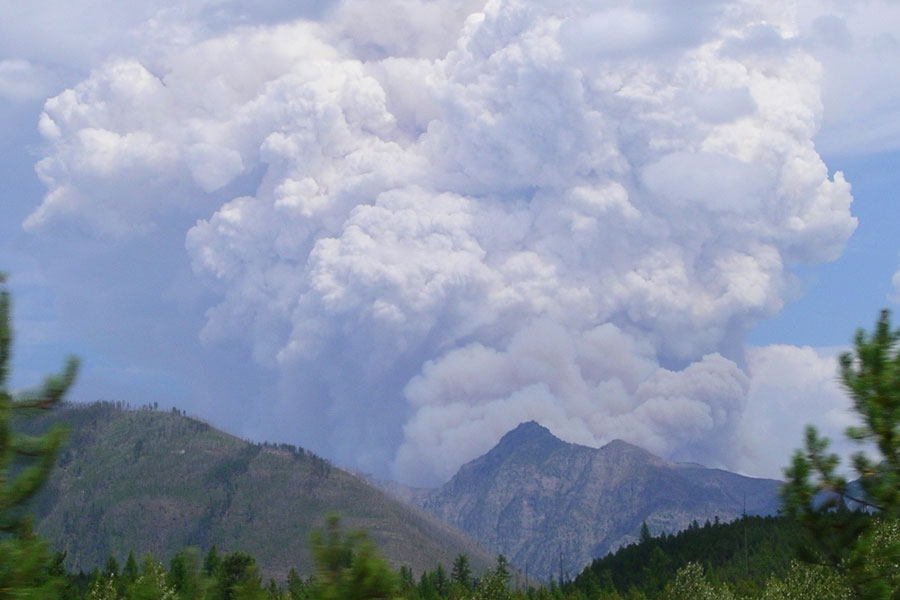Hot temperatures and historically dry conditions helped the largest wildfire in Montana spread east through Glacier National Park.
On Wednesday night, the National Park Service announced that the Thompson Fire had burned 23 square miles of land, or 14,900 acres, in the heart of the park, about 8 miles north of Nyack and U.S. Highway 2.
Because of the rugged and remote terrain, the National Park Service has deemed it too dangerous to fight the fire with ground resources and has only used helicopters to drop water in an effort to keep the blaze at bay. A Type II incident management team is expected to take control of the fire on Thursday.
At least two structures, the Upper and Lower Nyack Backcountry Patrol Cabins, are threatened by the blaze and firefighters went in this week to wrap one cabin in hopes of saving it.
The fire has forced the closure of the Nyack and Coal Creek areas, including numerous trails and backcountry campgrounds. Also trails and campgrounds in the Cutbank and Two Medicine area are now restricted. On Sunday, a father and son from Whitefish were airlifted out of the area.
The cause of the fire is under investigation.
On Tuesday, the National Park Service announced that it would only permit campfires in designated “front country” campgrounds, including Apgar, Avalanche, Bowman Lake, Cut Bank, Fish Creek, Kintla Lake, Logging Creek, Many Glacier, Quartz Lake, Sprague Creek, St. Mary and Two Medicine. Only liquid petroleum or LPG-fueled stoves, lanterns or heating devices will be allowed in backcountry.
The Thompson Fire is one of two major fires burning inside Glacier National Park. The Reynolds Creek Fire has burned more than 4,000 acres of land on the east side of the park since late July. As of this week it is 67 percent contained.
Hot and dry conditions, coupled with a series of lightning storms earlier in the week, have kept firefighters busy across Northwest Montana. On Wednesday, two large fires flared up on the Kootenai National Forest near Libby. Although details were limited, it was reported that the Dunn and Weigel fires had each burned between 80 and 100 acres of land in Lincoln County.
